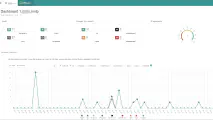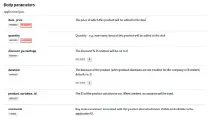Starting with any SaaS CRM without existing customer data would be relatively simple. Just login, and start selling.
Migrating from an ancient IT system is different. This article covers many pitfalls, when taking the existing customer data to a CRM. If you invest a lot of time comparing different CRM options, I recommend investing even more to the proper migration plan.
This is my Pipedrive migration story.
Estimating the amount of work in Pipedrive migration
Migrating from the old CRM to Pipedrive was a laborious project for one person. That’s mostly because of my broad role and under estimating details.
From the original description given by the client I understood that the task would be a simple data transformation. Eventually my duty was to work as an external consultant and a project manager.
The work hours increased from estimated 50 to around 150 during the project. My over confidence in the sales pitch explains part of the extra hours. On the other hand the customer wanted to expand the project scope in the half way.
For small amount of data and clear requirements one person would definitely be sufficient. In a bigger project I would separate the roles of the project manager and the hands-on technical person.
Transforming the data to Pipedrive entities
The Pipedrive data structure is simple. They have just a few well defined entities: Contact person, customer organization, sales deal, activity and product.
Not investigating thoroughly how these entities were defined in the old system was the single greatest reason for tripled working hours.
It took long time to realize that the same person could have been multiple times in the old CRM. In the Pipedrive data model the person should exist only once. The person could be linked to multiple organizations in Pipedrive if needed.
If we would have had only some hundreds of contacts, the issues would have been noticed early on. Instead, we had tens of thousands of contacts from different sources, which made the data validation more difficult.
Considerations about Pipedrive data import
One pitfall in the data import was the handling of duplicate records. This is where it boils down to definitions of the person and the organization.
Think wisely whether you want to create multiple entities from duplicate records or merge the duplicates to one. Fortunately Pipedrive has done excellent job with their import tool to support both of the options.
How do you know if you have the correct data in Pipedrive?
My recommendation is to validate the data with simple row counts. If the number of persons or organizations doesn’t align with your expectations, take a closer look at your data transformations. Sounds easy, but it’s not after joining and filtering data.
Data transformation tools for Pipedrive migration
The data was downloaded from the old CRM as Excel and CSV files. The original customer information was then enriched with additional financial data that was purchased from another company.
I used mainly Microsoft Excel Power Query to transform, join and filter the data to the structure that Pipedrive demands. The output should be individual files for the person, organization, deal and activity.
The problem was that Power Query became slow already with relatively small amounts of data. A lot of additional calculated columns were needed for the financial numbers. This increased the computational requirements but also forced to do redundant manual work with Power Query.
I would use pandas library of Python programming language if I would do the transformations again. Python would solve issues with the performance and code simplicity. The pandas library is a standard choice for the data engineers and the documentation of the library is profound.
Designing the integrations when migrating to Pipedrive
Integrating Google Drive, contacts and calendar to Pipedrive is a walk in the park. Overall, the integrations are pretty easy to apply. Most often you get a redirection to a login page of the integrated service and that’s it.
The customer needed an integration to the email automation service Mailchimp. Once again we came together with the definitions of data. Pipedrive and Mailchimp should have a common understanding about the customer and organization. For example, what should be done, if a person has mutliple email addresses?
When we did the project Pipedrive didn’t have two-way Mailchimp integration available. The automation worked only from Mailchimp to Pipedrive. The integration platform Zapier is often a good choice in these situations, but we were out of luck this time.
We decided to take a detour to make the integration work also from Pipedrive to Mailchimp direction. The data was downloaded monthly from Pipedrive to an Excel sheet. An automated Excel macro would then process the data to the Mailchimp suitable format to be imported to Mailchimp.
I encourage to check the Pipedrive Marketplace to find suitable integration services.
Summarizing the migration from the old CRM to Pipedrive
A CRM migration becomes more complex when the amount of data sources and the number of records increase. According to my experience Pipedrive, as any other SaaS CRM, is super easy to start with from the clean table.
I hope my struggles with entity defintions, data import, data transformation tools and integrations makes your CRM migration estimates more realistic.
Pipedrive is an excellent and simplistic sales tool for result oriented small and mid sized sales teams. The CRM migration struggles won’t go away by selecting some other system.
Pipedrive provides many useful tools for data migration such as data import, Pipedrive API, duplicate checking and all the Marketplace apps. Data export is easy as well, so changing away from Pipedrive would not be a problem either.
The number of Pipedrive integrations is increasing all the time, which makes your life even easier in the future.




